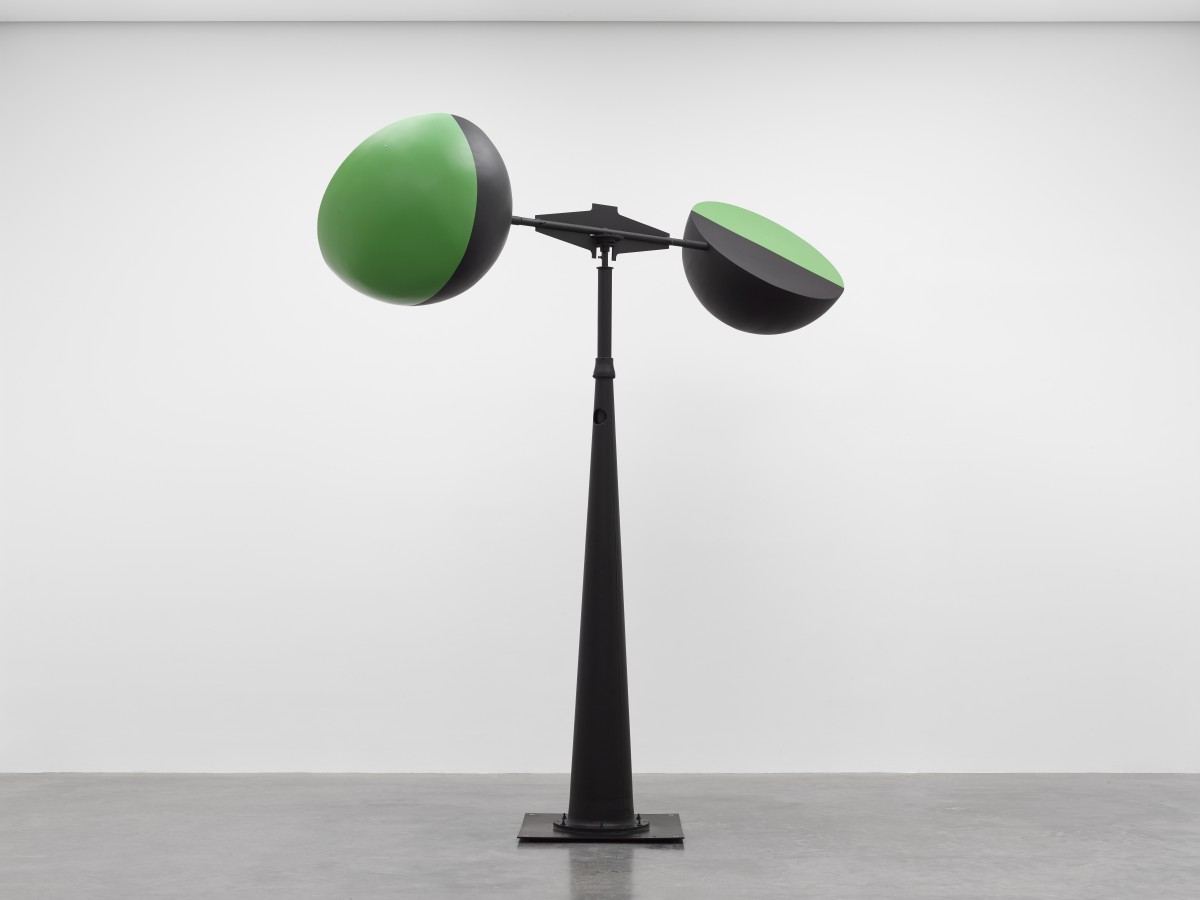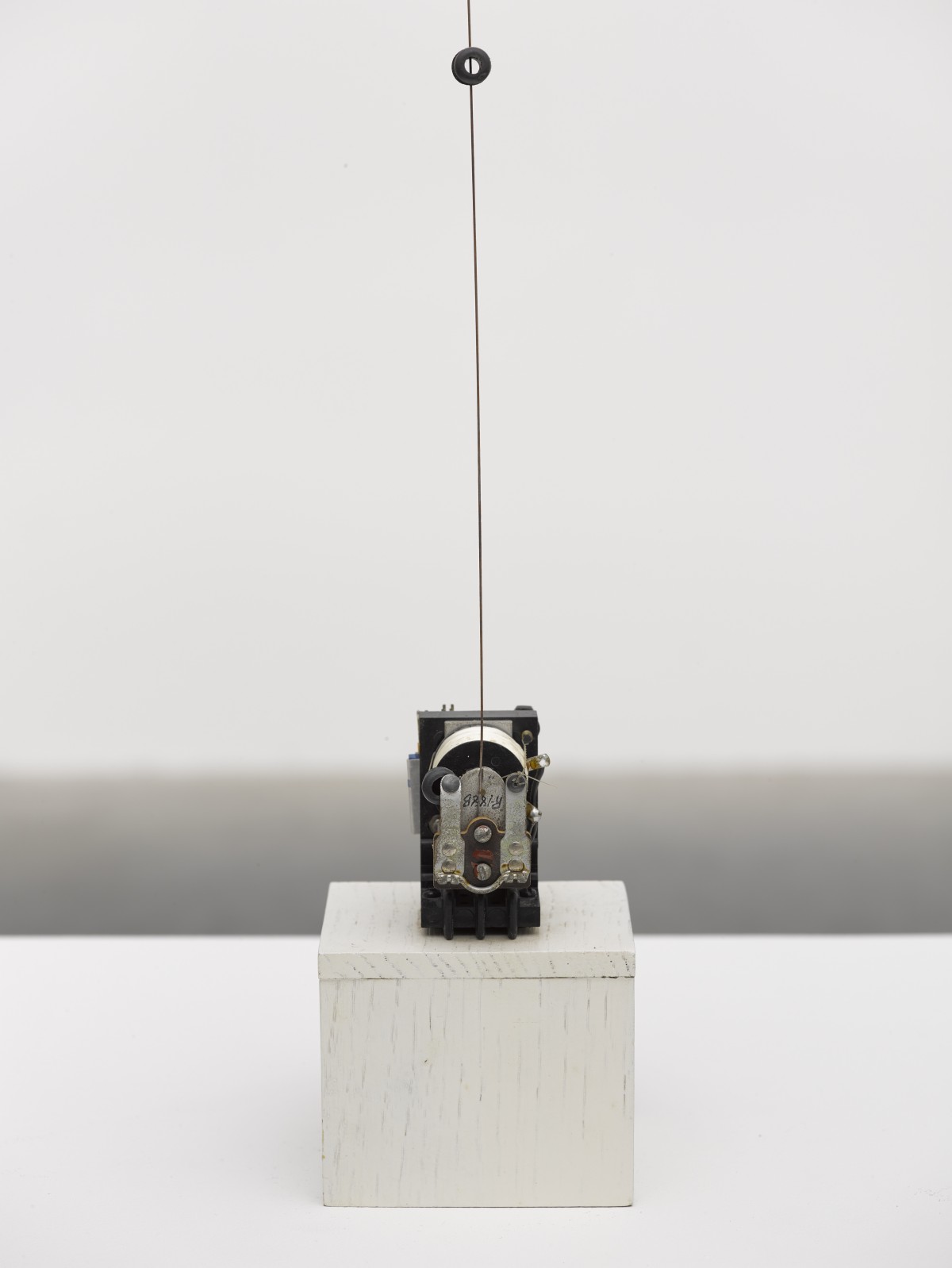At the very end of the main hallway in White Cube’s gargantuan Bermondsey location—and the very end of the current Takis exhibition—a number of catalog essays, letters, interviews, and other written text are laid out on a table. Here, you will find a quote by famed poet Allen Ginsberg, published in the artist monograph Takis: Magnetic Sculptures (1967);
“…Takis explained to me that the stars were all pulled together with myriad thin invisible wires of magnetism radiating from every star to every other star—so we imagined, if you pulled out any one star the whole thrumming mechanism would slip a cosmic inch like a quavering mobile…”
The quote had a profound impact on me after leaving the exhibition, as it elucidated the sense of wonder I had when interacting with Takis’ kinetic sculptures for the first time. The artist produced works that often merge science and art together, and this amalgamation results in a statement so majestic, yet enigmatic, that it is difficult for the viewer to decipher what they are experiencing. The curiosity around Takis’ works is due to their intricacy, despite both their minimalist aesthetic and incessant experimentation.
 Vibrating Vertical Line ECG, 1966. Painted wood, electromagnet and iron wire. 29 7/16 × 2 3/4 in. (74.8 × 7 cm). Courtesy of White Cube Bermondsey.
Vibrating Vertical Line ECG, 1966. Painted wood, electromagnet and iron wire. 29 7/16 × 2 3/4 in. (74.8 × 7 cm). Courtesy of White Cube Bermondsey.
The Greek-born, self-taught artist is already familiar to a London-based audience, as a major retrospective was dedicated to him at Tate Modern two years ago. He passed away a month after the exhibition opened, and his legacy as the pioneering kinetic sculptor of his time is now solidified by this representation at White Cube. The gallery is known for showcasing artists who are at the later stages of their career (or, like Takis, who have already passed away). Their large showrooms and ample resources allow the gallery to organize museum-quality exhibitions for such artists that oftentimes require and warrant this presentation.
Takis is no exception. His sculptures necessitate a venue with high ceilings, and some level of separation as many of them flicker, vibrate, or spin. One sculpture consisting of two lime green and black half-spheres and an iron pole, Aeolian (1983), requires wind energy to operate, and thus can only be displayed outdoors. When exhibited together, these sculptures resemble parts of an eccentric assembly line, leaving viewers agape at their inventive mechanics. Takis uses a wide range of materials, as wires, poles, electric circuits, and electromagnets abound alongside lamps and found objects.
 Female Figure, 1962. Iron. 22 7/16 × 3 15/16 × 3 9/16 in. (57 × 10 × 9 cm). Courtesy of White Cube Bermondsey.
Female Figure, 1962. Iron. 22 7/16 × 3 15/16 × 3 9/16 in. (57 × 10 × 9 cm). Courtesy of White Cube Bermondsey.
In addition to the kinetic sculptures and a selection of equally complex “Magnetic Wall – The Fourth Dimension” paintings produced in the 1990s, the exhibition features iron cast figures Takis created throughout his career. Displayed in the last gallery, the iron casts are perhaps too simplistic and derivative in comparison to the rest of Takis’ oeuvre and the focus on gendered bodies in Oedipus and Antigone (1953) does not bode well today. Nevertheless, it is delightful to see the versatility of this prolific artist.
TAKIS
White Cube Bermondsey
12 May – 27 June 2021
White Cube Bermondsey
Booking is required before you visit.
https://whitecube.com/exhibitions/exhibition/takis_bermondsey_2021


 Vibrating Vertical Line ECG, 1966. Painted wood, electromagnet and iron wire. 29 7/16 × 2 3/4 in. (74.8 × 7 cm). Courtesy of White Cube Bermondsey.
Vibrating Vertical Line ECG, 1966. Painted wood, electromagnet and iron wire. 29 7/16 × 2 3/4 in. (74.8 × 7 cm). Courtesy of White Cube Bermondsey. Female Figure, 1962. Iron. 22 7/16 × 3 15/16 × 3 9/16 in. (57 × 10 × 9 cm). Courtesy of White Cube Bermondsey.
Female Figure, 1962. Iron. 22 7/16 × 3 15/16 × 3 9/16 in. (57 × 10 × 9 cm). Courtesy of White Cube Bermondsey.